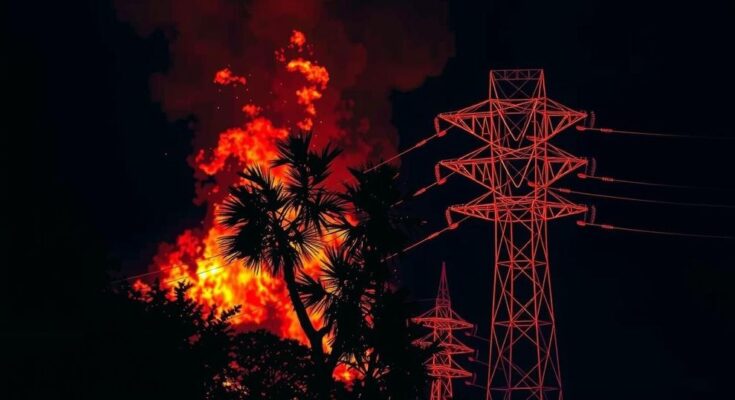On Sunday night, Zimbabwe and Zambia experienced nationwide blackouts due to power line disturbances connected to South Africa’s Eskom. The outages began minutes apart, with restoration efforts proving successful by early Monday morning. Both countries face ongoing energy generation challenges, highlighting the need for improved infrastructure and diversification of energy sources to mitigate future vulnerabilities.
On Sunday night, both Zimbabwe and Zambia endured nationwide power outages, which were triggered by disturbances on power lines that connect the two nations to South African utility Eskom. The blackouts began shortly after 8 PM, with Zambia reporting a loss of electricity at 8:15 PM, followed by Zimbabwe just ten minutes later. The Zimbabwe Electricity Supply Authority (ZESA) confirmed the situation, stating that the national grid experienced significant disturbances. Similarly, Zambia’s state power company, ZESCO, indicated that a systemic malfunction led to the outages affecting the entire country.
By early Monday morning, ZESA announced that power restoration was progressing well, with most regional substations returning to service by 3 AM. This was a welcome development for citizens who had faced the discomfort of a complete blackout. Internal sources within ZESA highlighted that the outages were likely due to a surge experienced on transmission lines leading from South Africa. Zambia, currently grappling with a critical power deficit, had increased its electricity imports from Eskom to mitigate the crisis.
Eyewitness accounts reflected an erratic power supply prior to the complete failure, suggesting systemic instability. These disruptions occurred in the backdrop of ongoing power generation issues experienced by both Zimbabwe and Zambia. Their dependency on the Kariba hydroelectric plant, which has been limited by low water availability, exacerbates the energy crisis. In Zimbabwe, outdated thermal power plants frequently malfunction, resulting in daily power disruptions that can last up to 18 hours, while Zambia faces similar challenges, which hinder business operations and affect households significantly.
The recent blackouts underscore the precarious state of infrastructure in the region, which relies on shared resources susceptible to disruptions. Both nations must prioritize enhancing the resilience of their electric grids and diversifying their energy sources as they confront ongoing energy challenges.
Zimbabwe and Zambia’s recent power outages reflect a broader regional energy crisis exacerbated by aging infrastructure and hydrological challenges. Both countries heavily depend on the Kariba hydroelectric plant for electricity generation, which has faced reduced output due to low water levels. Frequent power cuts have been commonplace, significantly affecting everyday life and economic activities. The reliance on imports from Eskom further highlights vulnerabilities in their power systems, making urgent reforms and improvements essential for sustainable energy security.
Both Zimbabwe and Zambia are currently facing significant power infrastructure challenges, as illustrated by the simultaneous blackouts experienced on Sunday night. The reliance on electricity imports and aging equipment underscores the urgency for both nations to enhance their energy generation capabilities and grid resilience. While restoration efforts began promptly, the current situation is emblematic of deeper systemic issues requiring immediate and concerted action to prevent future disruptions.
Original Source: bulawayo24.com




